Accepted Scientific Name: Pachypodium eburneum Lavranos & Rapan.
Cact. Succ. J. (Los Angeles) 69: 227 (1997)
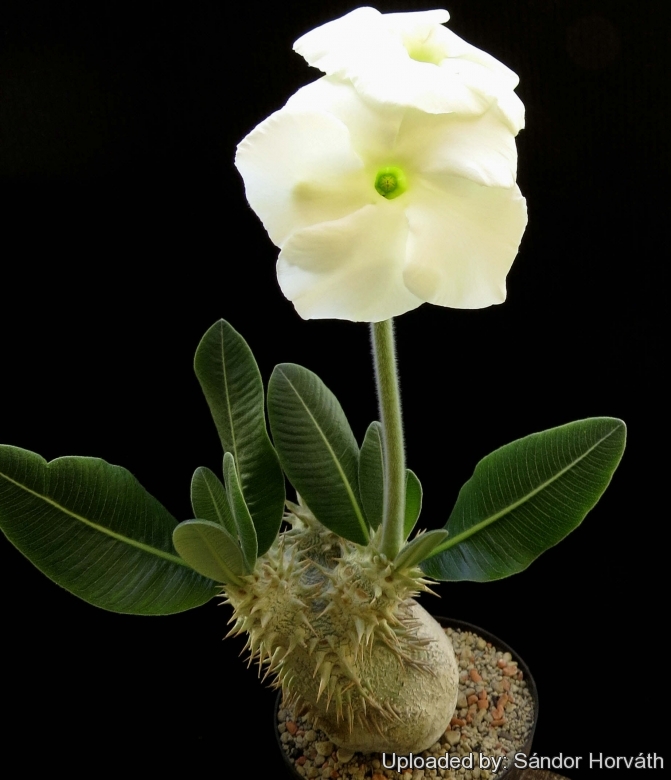
Pachypodium rosulatum var. eburneum (Pachypodium eburneum) Photo by: Sándor Horváth
Origin and Habitat: It comes from a tiny isolated area in the Mount Ibity region in central Madagascar (province of Antananarivo). Pachypodium eburneumSN|14808]]SN|14798]] is known from two subpopulations (Ibity and Andranomangatsiaka). One of these has been extirpated and the remaining subpopulation is not located within a protected area. It has an area of occupancy of 9 km2 and it has one location. The total number of individuals in probably under 100 but the number of mature individuals has not been quantified. It may now be extinct in the wild.
Altitude range: 1,500 to 1,999 metres above sea level.
Habitat and ecology: Pachypodium eburneumSN|14798]]SN|14798]] grows in subhumid woodlands and on inselbergs or rock faces on quartzitic rocks. This species can be found with these associated species: Pachypodim brevicaule, Pachypodium densiflorumSN|14798]]SN|14808]], Uapaca bojeri, Aloe capitata and Sarcolaena oblongifolia. In addition, the species experiences continuing decline due to illegal collection for the horticultural trade and loss of habitat caused by annual wildfire. It is therefore assessed as Critically Endangered.
Synonyms:
Common Names include:
LITHUANIAN (Lietuvių): Gelsvasis tukvis
Description: Pachypodium eburneumSN|14808]]SN|14798]] is a small growing cauduciform plants that looks somewhat like Pachypodium densiflorumSN|14798]]SN|14808]] but with much heavier spination and more blunt leaves. Seedlings grow fairly slowly and mature specimen are fairly compact up to 25 cm in diameter and the whole plant barely 25-30 cm tall.
Derivation of specific name: Its name alludes to the large showy ivory colored flowers which do not revert to yellow in cultivation.
Caudex and branches: Smooth silver with a light green tint with short thick arms. The trunk is covered with heavy conical spines that occur in pairs and form a stair step pattern around it.
Leaves: Obovate, more blunt than in densiflorum, medium green with a light middle vein and symetrical veination. The leaves will drop soon.
Flowers: Large, showy, ivory colored with a yellow tint in the center throat on long peduncles. Each peduncle bears about 6 (or more) flowers. Flowers will set in the second year in good conditions.
Bibliography: Major references and further lectures
1) Urs Eggli "Illustrated Handbook of Succulent Plants: Monocotyledons" Springer Science & Business Media, 06 December 2012
2) S. H. J. V. Rapanarivo “Pachypodium (Apocynaceae)” CRC Press, 01 June 1999
3) Gordon D. Rowley “Pachypodium and Adenium” Cactus File, Cirio Pub. Services, 1999
4) Werner Rauh “Succulent and xerophytic plants of Madagascar”, Volume 1 Strawberry Press, 1995
5) Members of the IUCN SSC Madagascar Plant Specialist Group. 2015. "Pachypodium eburneum." The IUCN Red List of Threatened Species 2015: e.T68501373A68709739. http://dx.doi.org/10.2305/IUCN.UK.2015-4.RLTS.T68501373A68709739.en. Downloaded on 14 January 2016.
 Pachypodium rosulatum var. eburneum (Pachypodium eburneum) Photo by: Valentino Vallicelli
Pachypodium rosulatum var. eburneum (Pachypodium eburneum) Photo by: Valentino Vallicelli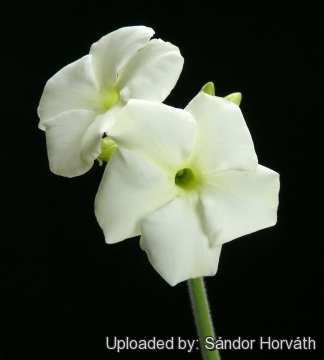 Pachypodium rosulatum var. eburneum (Pachypodium eburneum) Photo by: Sándor Horváth
Pachypodium rosulatum var. eburneum (Pachypodium eburneum) Photo by: Sándor Horváth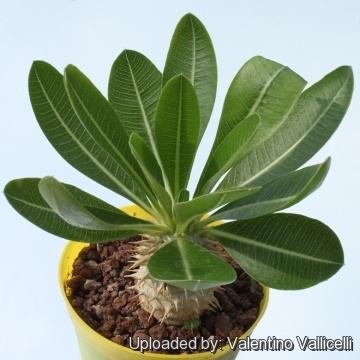 Pachypodium rosulatum var. eburneum (Pachypodium eburneum) Photo by: Valentino Vallicelli
Pachypodium rosulatum var. eburneum (Pachypodium eburneum) Photo by: Valentino Vallicelli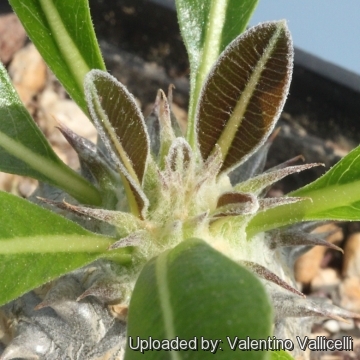 Pachypodium rosulatum var. eburneum (Pachypodium eburneum) Photo by: Valentino Vallicelli
Pachypodium rosulatum var. eburneum (Pachypodium eburneum) Photo by: Valentino Vallicelli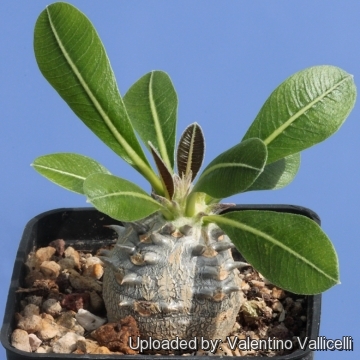 Pachypodium rosulatum var. eburneum (Pachypodium eburneum) Photo by: Valentino Vallicelli
Pachypodium rosulatum var. eburneum (Pachypodium eburneum) Photo by: Valentino Vallicelli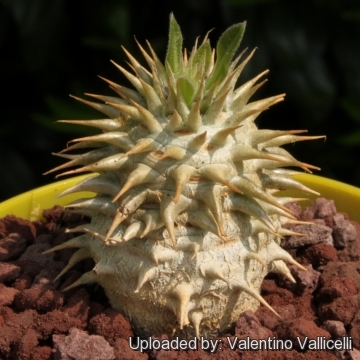 Pachypodium rosulatum var. eburneum (Pachypodium eburneum) Photo by: Valentino Vallicelli
Pachypodium rosulatum var. eburneum (Pachypodium eburneum) Photo by: Valentino Vallicelli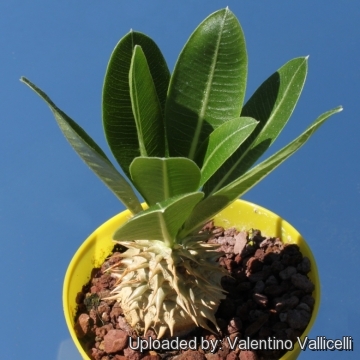 Pachypodium rosulatum var. eburneum (Pachypodium eburneum) Photo by: Valentino Vallicelli
Pachypodium rosulatum var. eburneum (Pachypodium eburneum) Photo by: Valentino VallicelliSend a photo of this plant.The gallery now contains thousands of pictures, however it is possible to do even more. We are, of course, seeking photos of species not yet shown in the gallery but not only that, we are also looking for better pictures than those already present.
Read More... Cultivation and Propagation: They seem to be rot-prone under less than ideal conditions and care. Water sparingly and give extra well-drained soil to avoid waterlogged conditions . The watering program will change depending on temperatures and stage of growth, but it is best not to let this plant dry out completely for any length of time. It is sensitive to cold and should be kept warm at all times. It tends to lose its leave and go dormant in winter when watering should be reduced to a minimum. It like full sun.
To make them less prone to rotting, they can be grafted onto Pachypodium gaeyi or Pachypodium lamerei. Plant grafted grow even faster and flower easily.

















